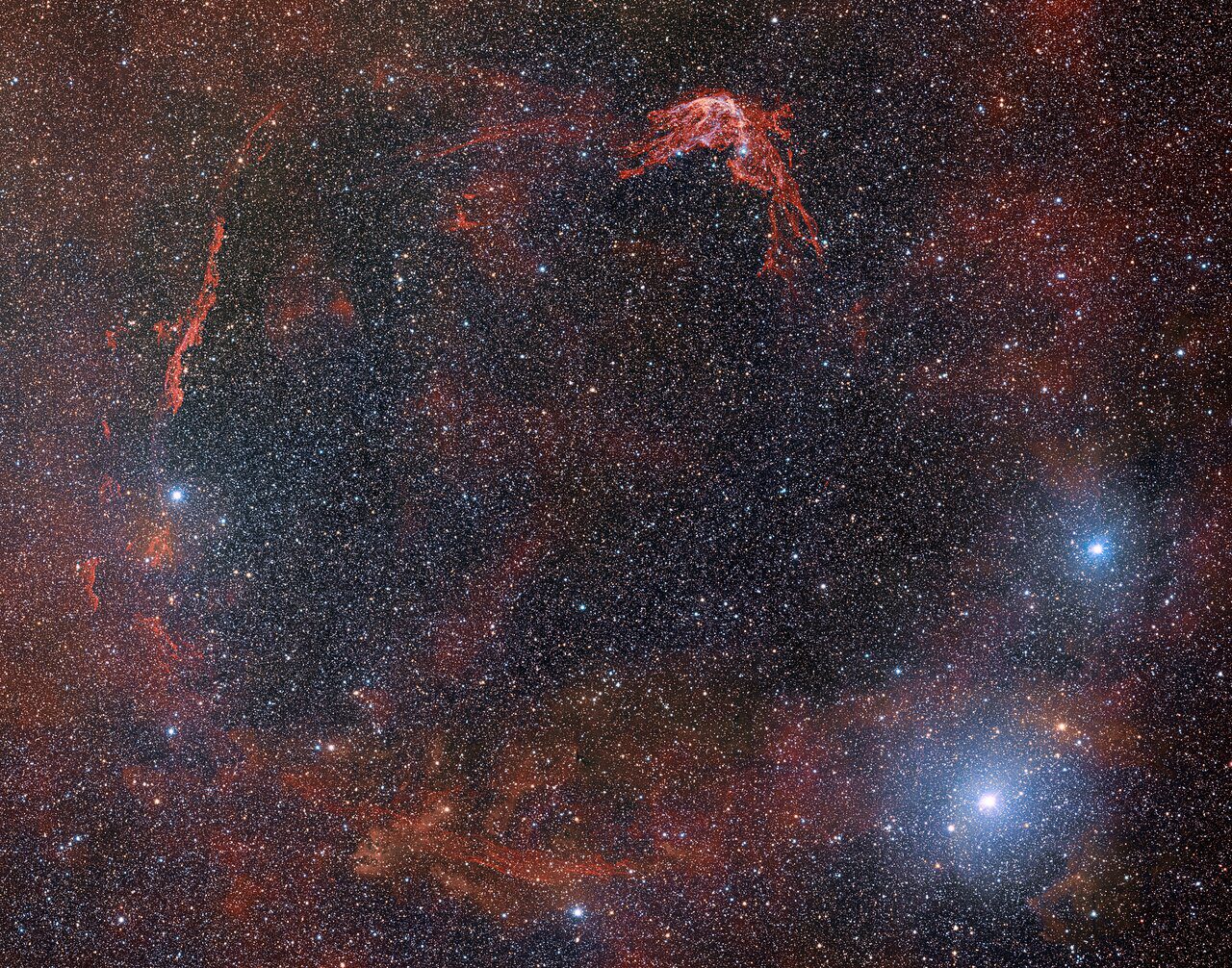On December 7, 185 CE, during the Han dynasty, Chinese astronomers recorded the appearance of a “guest star” appearing in the vicinity of Alpha Centauri. “Guest star” is the name that these ancient astronomers used for luminous transient events. Today, we call them supernovas. SN 185 is the oldest recorded supernova, and now a new image shows the supernova remnant in glorious detail.
The object itself is located 8,000 light-years from Earth, and it has the name RCW 86. Observing this object is not easy. It is very faint as there’s only the gas shell remaining of the event. And it is actually very large. It would be wider than the full moon if you could see it with the naked eye.
The size actually had astronomers questioning whether RCW 86 was truly related to SN 185. They thought it would have taken five times as long for your average supernova to get that big. But SN 185 was not your common or garden stellar explosion. Observations of the gas shell were able to measure how quickly it is expanding, and it is consistent with a supernova that took place about 2,000 years ago.

RCW 86 as seen by the Dark Energy Camera. Image credit: CTIO/NOIRLab/DOE/NSF/AURA T.A. Rector (University of Alaska Anchorage/NSF’s NOIRLab), J. Miller (Gemini Observatory/NSF’s NOIRLab), M. Zamani & D. de Martin (NSF’s NOIRLab)
To understand what made the explosion so special that it expanded at such speed, the team used the Chandra X-Ray observatory to study the object. This allowed them to study the exact speed of the fastest-moving shockwave. It moves at 2,700 kilometers per second (or over six million miles per hour). That is fast. There are particles in the supernova remnant that are being accelerated with more energy than we can currently achieve in our particle accelerators.
And the observations also revealed the presence of iron, which suggests it was a specific type of supernova that exploded. They are called Type Ia supernovas and they involve some stellar thievery. They happen when a star is losing material to its companion, but not just any companion: a white dwarf.
A white dwarf is the exposed core of a star like the Sun, which after becoming a red giant did not have enough mass to collapse into a supernova. This white dwarf siphons material away from its companion until it is so heavy that collapses into itself in a dramatic supernova explosion. Given that the mass limit is standard for all white dwarfs, Type Ia supernovas all have the same luminosity and are used as “standard candles”, a way to measure distant galaxies.
The supernova remained visible for eight months as described in the Book of Later Han. It is possible that there is also a mention of the supernova in Latin literature, but the Romans at the time might have all been busy watching Emperor Commodus fighting gladiator matches.
The beautiful new image of RCW 86 was taken by the Dark Energy Camera mounted on the Víctor M. Blanco 4-meter Telescope at Cerro Tololo Inter-American Observatory in Chile.
Source Link: First Supernova Ever Documented 1,800 Years Ago Now Captured In Stunning Photo